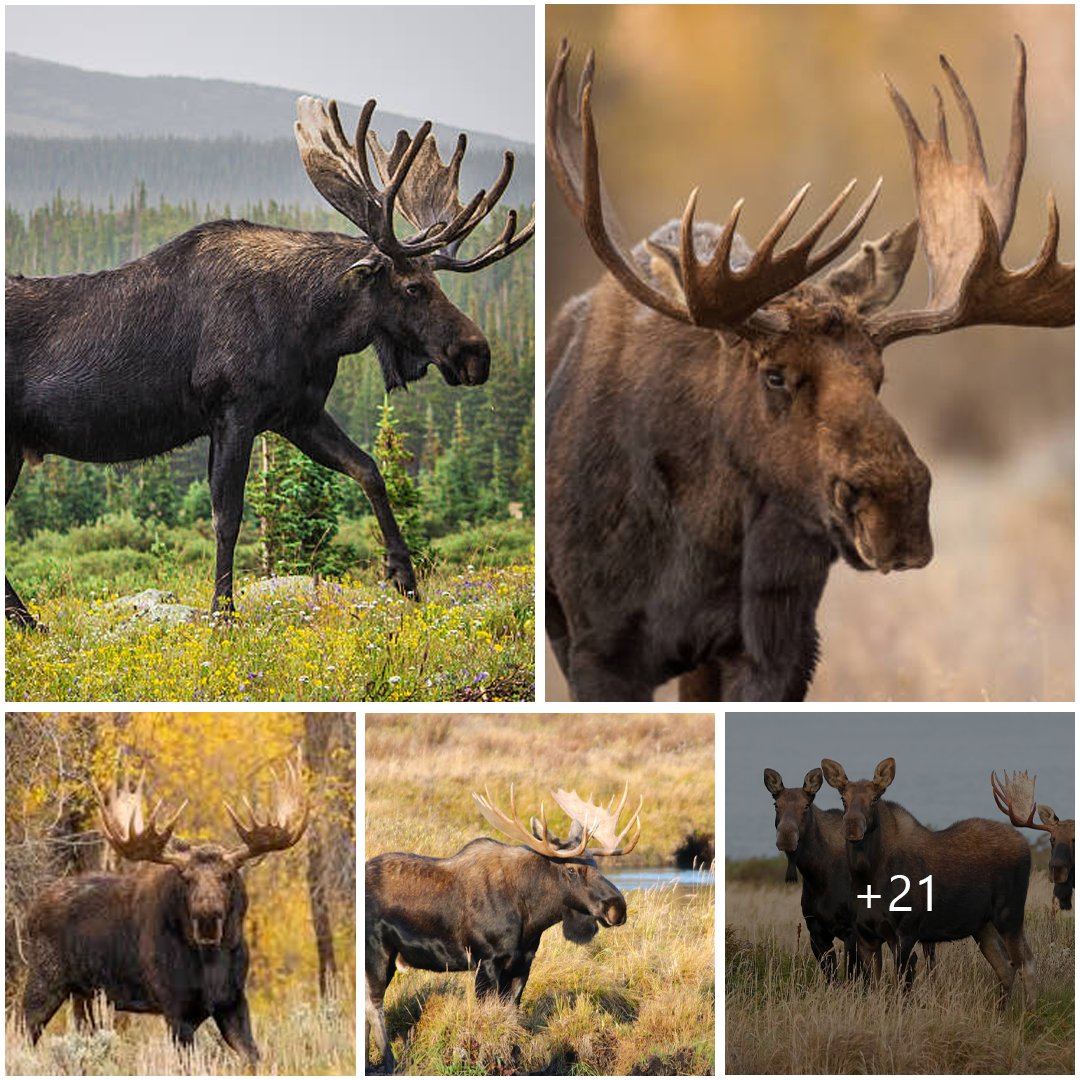
Unveiling the Majestic Moose: Iconic Symbol of the Northern Wilderness
The moose, also known as Alces alces, is a magnificent and iconic species native to the northern regions of North America, Europe, and Asia. Renowned for its towering stature, impressive antlers, and solitary nature, the moose holds a special place in the hearts of wilderness enthusiasts and conservationists alike. Let’s explore the fascinating world of this remarkable creature.
Habitat and Range
Moose inhabit a variety of ecosystems, including boreal and mixed forests, swamps, and marshes. They are most commonly found in the northern latitudes of North America, particularly in Canada and Alaska, where vast expanses of wilderness provide ample habitat for these majestic animals. Moose populations can also be found in parts of Europe, including Scandinavia and Russia, as well as in Asia, including Siberia and Mongolia.
Physical Characteristics
The moose is the largest member of the deer family, with adult males, known as bulls, reaching heights of up to 7 feet at the shoulder and weighing between 800 and 1,500 pounds. Females, known as cows, are slightly smaller, typically reaching heights of around 5 to 6 feet and weighing between 600 and 1,000 pounds. Moose are characterized by their long legs, humped shoulders, and distinctive broad, palmate antlers, which can span up to 6 feet in width.
Behavior and Lifestyle
Moose are primarily solitary animals, with bulls and cows typically coming together only during the mating season in the fall. Bulls engage in dramatic displays of dominance to compete for mates, often engaging in battles with rival males using their antlers. After mating, cows give birth to a single calf in the spring, which they fiercely defend from predators.
Moose are herbivores, feeding primarily on a diet of twigs, leaves, and aquatic vegetation. They are excellent swimmers and are often found foraging in lakes, rivers, and marshes, where they can reach aquatic plants that are out of reach for other herbivores.
Conservation Status and Threats
While moose populations are relatively stable in some regions, they face several threats to their survival, including habitat loss, climate change, and predation. Deforestation, urbanization, and land development have led to the fragmentation of moose habitat, making it increasingly difficult for these animals to find suitable food and shelter.
Climate change is also having a significant impact on moose populations, affecting their habitat and food sources. Warmer temperatures and changing weather patterns can lead to increased stress, reduced reproductive success, and higher mortality rates among moose.
Predation by wolves, bears, and humans also poses a threat to moose populations, particularly in areas where hunting and trapping are prevalent. Conservation efforts aimed at protecting moose habitat, managing predator populations, and mitigating the impacts of climate change are crucial for ensuring the long-term survival of this iconic species.
Conclusion
In conclusion, the moose is a magnificent symbol of the northern wilderness, beloved for its imposing stature, impressive antlers, and solitary nature. While moose populations face numerous challenges, including habitat loss, climate change, and predation, concerted conservation efforts offer hope for their continued survival in the wild. By working together to protect their habitat, manage their populations, and address the root causes of their decline, we can help ensure a bright future for this iconic species for generations to come.





